
|
| Incursion links |
|---|
| General |
| Advanced |
| EVE University |
| Preparations |
| Fittings |
| Guides |
Overview
Incursion fleets rely rely on good resists, sufficient buffer, command bursts and active logistics. There are simply too many enemies to be able to fit a strong enough local tank, not to mention that by sacrificing a small portion of your fleet to bring in logistics instead of more damage dealers, the rest of the damage dealers can fit more offensive modules and your fleet will perform better.
Once you have a good enough tank, the rest of your spare slots should be used to augment your (and the fleet's) damage potential. While being undertanked is obviously dangerous, being overtanked is not only wasteful, but can present a a different kind of danger if done at the cost of offensive capability.
See Preparing for Incursions for more information about what skills we ask that members of the EVE University Incursion Community have trained. While other communities might have similar requirements, this is just what we recommend.
Fitting Principles
The EVE University Incursion community suggests fits based on a set of principles which are designed to allow us to run the sites safely and efficiently. These princples act as guidelines that are followed in every fit we suggest to our community.
Why these principles?
Shield vs armour doctrines
Incursions can be done with both shield and armour doctrines. Previously the EVE University Incursion Community has used a shield doctrine, however we now use an armour doctrine. There are pros and cons to both:
- Shield tanking modules are less skill dependant compared to armour, as passive armour modules require the armour compensation skills. However, there is no multispectrum passive shield amplifier, so shield tanking relies on capacitor, and can be turned off if a ship is sufficiently neuted. This aspect is most prevalent in Assault and Headquarters sites, where neut pressure is much more of a concern owing to the Otouni Mesen, which carries a capital-sized neutralizer, as well as the requirement of those sites to equip propulsion modules which are exceedingly capacitor hungry on their own.
- Remote shield boosters apply their repairs at the start of a cycle, which can allow logistics to be applied sooner in the case of sudden aggro switches, however amour repairs tend to cycle faster, and have some buffer in their shields, meaning this benefit is somewhat negated.
- In the event that a ships tank were to break, shield ships have more buffer than armour ships - a shield ship can bleed both armour and hull, whereas an armour tanked ship would only be bleeding hull.
- Shield tanking modules occupy the midslots of a ship, which could otherwise be used by modules such as tracking computers and sensor boosters (which are more effective and flexible as compared to their lowslot counterparts), as well as other utility modules such as stasis webifiers and target painters. Armour tanking modules instead take up lowslots.
In the EVE University Incursion Community we run armour doctrine because of a mix of these reasons, as well as the fact that the majority of the public incursion communities now run armour doctrine fleets, meaning Unistas who wish to explore the incursions content that the University cannot provide are best positioned to do so.
Sansha Incursion Rats
The Sansha incursion rats deal damage in two ways, lasers (EM and thermal) and torpedoes (kinetic and explosive). As such, they hit across all four resist types. While you can sometimes compensate for a low kinetic resist by having a higher explosive resist, or get away with lower resists due to having a small signature and high speed, generally you don't have the luxury of having resist holes in incursions.
Just as they do damage across the board, the Sansha incursion rats have omni tanks as well. The only notable exception is the Lirsautton Parichaya, it's a little weaker against thermal damage and stronger against explosive damage. So contrary to missions where Amarr and Gallente weapons are somewhat limited due to their set damage types, these weapons are not hampered by resists in incursions.
The incursion rats also do a wide variety of Electronic Warfare, including ECM, target painting, stasis webifying, warp disrupting, and energy neutralizing. You can find out more statistics about the Sansha incursion rats on the Sansha's Manual page.
Applied DPS
One of the most important aspects to realize is that whatever DPS (damage per second) your favourite third party fitting tool tells you that you have, or whatever the fitting window ingame tells you, is worth nothing if you cannot apply that damage. Hence the term "applied DPS" as opposed to "paper DPS" which is basically just your potential damage.
One notable example of this is the use of missiles. Because of missile flight time, it is possible to fire missiles at a target, but have that target die before those missiles apply their damage. This is effectively lost DPS, and would be a common situation in any fleet involving ships with missile-based weapon systems. As such, we do not allow missile ships in our fleets, as they do not do anywhere near close to their paper DPS consistently throughout the fleet.
Your velocity, your target's velocity, approach vectors, your gun's signature resolution, your target's ship signature, locking speed, locking range, your weapon's optimal and falloff range and tracking all play a vital part in how much of your damage you'll be able to apply on your enemy. See turret damage or the gunnery guide for a more comprehensive introduction to the factors determining how much damage you'll end up doing when you undock and leave your theoretical bubble. Practically this means that utility modules (in particular the bonused stasis webifiers of a Vindicator) often make or break fleets.
Utility modules
Utility modules refer to modules you fit that doesn't directly give you a higher dps in your favourite third party fitting program or on your fitting screen ingame. Instead they act as force multipliers of sorts making up for weaknesses or capitalize on strengths for increased efficiency. There are also modules that has no impact on your offensive capabilities, but are invaluable when things go wrong.
While the exact fits vary between communities as well as fleet compositions, there are a few common grounds for using utility mids. In vanguards, the sensor boosters allow you to lock up the much smaller frigates more quickly, webs are used to help apply damage to enemies that come close, while painters and tracking computers help apply damage at range. The same can be said for assaults and headquarters, although the need for sensor boosters rapidly diminish as you move on from vanguards, as there are fewer frigates in assaults and headquarter sites, reducing the need for sensor boosters.
Utility highs are selected based on individual ship needs. It is common for ships to include an Auto Targeting System in a utility highslot to give access to more locked targets, potentially allowing a ship to lock all of the Sansha in a wave up at the same time, removing the need to continually lock rats as the wave progresses. Outside of this, it is good practice to include Remote Armour Repairers for use in emergencies where the logistics pilot in a fleet may have disconnected. Outside of Vanguards, Remote Capacitor Transmitters can be useful, as these can help ships being targetted by Sansha such as the Deltole Tegmentum or Otouni Mesen, which provide significant capacitor neutralization pressure.
Drones
Though we tend not to use them, drones can be a tremendous asset on a fleet that is weak in terms of DPS, if you pick the right ones and use them intelligently. The sum of all the drones in fleet can easily amount to the equivalent of adding an extra pilot or two on grid, so it's not something to treat lightly. See utilizing drones for tactical information on how to make the most of drones.
When selecting drones you need to factor in how to get the best mix of microwarpdrive and orbital speeds, as well as tracking and optimal range for the type of fleet and sites you run - generally smaller sites have more frigates, which need fast, well tracking drones. Amarr drones generally provide the best mix for most situations except for headquarter sites where slower drones, but with higher focused DPS, are useful for taking down large ships. See drones for more statistics about drone attributes.
Below are the drones we recommend within our community:
| Recommended drones/site | Light drones | Medium drones | Heavy drones | Sentry drones |
|---|---|---|---|---|
| Acolyte II [1] | Not recommended | Not recommended | Garde II [2] | |
| Acolyte II | Infiltrator II | Not recommended | Curator II [3] | |
| Hobgoblin II | Hammerhead II | Ogre II [5] | Not recommended |
- ^ Alpha Clones can use Imperial Navy Acolytes instead, due to skill restrictions.
- ^ (Situational) Unbonused sentries have considerably lower tracking and needs to operate at range or stay on cruisers..
- ^ (Situational) In order to use Curator II drones you need to remain stationary more often than not. The extra range of curators is needed for the 35 - 65 km engagement range.
- ^ Drones are often put on stationary objects in headquarter sites, thus focus shifts from Amarr drones (speed and application) to Gallente drones (maximum damage).
- ^ If cost isn't an issue, Gecko or 'Augmented' Ogre drones are preferred due to increased speed and better damage application.
Aside from damage drones, logistics drones are vital to the safety of a fleet. In the case that the logistics pilot disconnects, the fleet is at significant risk due to the diminished remotre repairs available. In such as case, the fleet relies on the repping power of the logibooster, on the utility reps of ships which have them, and on the logistics drones that every member of the fleet carries. To this end, we suggest that every ship be equipped with at least a set of Armour Maintainance Bots. Additionally, if a pilot wishes, they could bring a set of Hull Maintainance Bots to repair any hull scratches that might occur in sticky situations.
Rigging choice

It's very easy to dismiss the importance of the rig selection when buying a new ship. While it's usually not something a new pilot needs to worry about when getting any of the minimum fits posted on the wiki, it's extremely important for people looking to get a new ship as it heavily influences your options in terms of flexibility and utility slots (which is everything in incursions). Don't spend too much ISK on a temporary setup, either go for a cheap "good enough" setup while you're saving up for your ideal setup, or just wait until you can afford the whole setup you want in the end.
| Defense Rigs
It is common for fits to have one or a combination of an Explosive, Thermal, or Kinetic armour resistance rig. It is also common for some fits to utilize a trimark armour pump rig, especially for those ships with less raw armour HP such as the Praxis. This can help eek out enough armour HP to avoid the need for a plate in the lowslots. | |
| Offence Rigs
Going for damage means that you're limited somewhat due to the high calibration cost of rigs such as Burst Aerators. Alternatively, Hyperspatial Velocity Optimization rigs offer the benefit of allowing your ship to warp faster, which is particularly advantageous in a situation where every fleet member is capable of the same, minimising the time the fleet spends in warp thus improving fleet efficiency. |
In general we recommend rigging your ship such that it is compatible with the public headquarters communities. This allows you to utilize the same hull for fleets run by those communities as well as the EVE University Incursion Community. With this flexibiltiy we hope to encourage people to explore more of the content as the barrier to entry is lowered.
Determining a proper tank
There are a few easy ways to determine whether a tank is OK or not. You can judge your tank by many means, but for Incursions the best way to measure your tank is to look at effective shield hit points (ESHP), as opposed to damage per second repaired (DPS-tank) or the generic effective hit points (EHP). This is because a lot of ships have significant armour and hull hit points, so the effective hit points value can be quite misleading on a battleship with a damage control for example, as the EHP-value skyrockets compared to a ship without a damage control fitted, but very little of it applies to the actual ESHP.
While the above mentioned effective shield hit points is a good measure, it is not always practical to use on the fly. For one it doesn't really tell you if the ship has any glaring resist holes, so for practical reasons we tend to speak in more general terms -- Shield hit points and resists. It's much easier to just ask the pilot "How many raw shield hit points do you have?" and "What are your resists if you undock and turn on all your modules?". It's very easy for people to check this ingame and it tells us enough to judge whether or not the fit is ok.
Guidelines
Below are some rough guidelines for what a proper tank might be for a battleship (there isn't much variation to speak of for logistics). Since we focus mainly on low skilled, kitchen sink setups we're going with a relatively high recommended level for our community. The values below are of raw shield hit points and paired average resists (EM/thermal and kinetic/explosive), values before boosts for easy comparison.
| Vanguards (33k+ effective shield hit points) 70% resists and at least 10,000 raw shield hit points. | |
| Assaults (40k+ effective shield hit points) 70% resists and at least 12,000 raw shield hit points. | |
| Headquarters (52k+ effective shield hit points + 100k effective hit points in total) 73% resists and at least 14,000 raw shield hit points. |
In vanguards it is somewhat common for FCs to allow (sometimes significantly) lower resists in fleets with sufficient DPS. This is a concept known as DPS tanking. Though it can be precarious and depend on all members of the fleet flying their ships effectively, having 4 or 5 Marauders in a fleet means that a significant portion of the Sanshas DPS never applies because the ships die before the get into range to apply significantly. With that said, remember that resists are far more important than raw shield hit points, as higher resists has the secondary benefit of increasing the efficiency of remote repairs. Below is a graph illustrating how damage changes with scaling resists.
| Resists | Actual damage taken | |
|---|---|---|
| 61% resists | 18% more damage (39% damage taken) | |
| 64% resists | 9% more damage (36% damage taken) | |
| 67% resists | Baseline Damage (33% damage taken) | |
| 70% resists | 9% less damage (30% damage taken) | |
| 73% resists | 18% less damage (27% damage taken) | |
| 76% resists | 27% less damage (24% damage taken) | |
| 79% resists | 36% less damage (21% damage taken) | |
Stacking penalties and offgrid boosts
A ship with fewer modules or rigs stacking will also benefit more from boosts, thus not suffering quite as much as they might initially seem to. This of course means they also have more to lose if boosts go down, which is worth noting.
Further down this page you'll see examples of this with the advanced setups. If you pay attention to the normal resist profiles vs the resist profile with command bursts you'll see that the electromagnetic rig setup for vanguards for example has a deceptively low EM/thermal resist, averaging around 62% instead of the recommended 70%. This would suggest nearly +30% more damage taken from turret damage, as your resists are almost 9% lower (see the graph above). But due to less stacking penalties that setup ends up having roughly ~68% average EM/thermal resists after boosts which is fairly close to the 72% of our recommended fits and will eventually only take +10% more damage from turrets, while taking torpedoes just fine.
This is then further compensated by pirate faction hulls (which this expensive setup should be used on) who overall have much lower signatures. The signature difference is at the very least 22% between the highest signature pirate faction hull (Vindicator) and the lowest signature regular battleship (Maelstrom), thus pirate faction hulls take reduced damage from missiles thanks to their much lower signature. The Nightmare and Machariel have even smaller signatures, meaning they take even less damage.
Applying the Guidelines - a practical example
This section serves as a guide on how to apply the fitting principles in a way that could generate a suitable fit for any suitable hull. In this example, we will work towards a fit for a pilot who has been flying the Starter Nightmare fit, and wants to work towards a more advanced fit to more effectively contribute to fleets, but does not have excessive isk to buy the most expensive fancy modules.
Rigs
Required Modules - Guns and Tank
Rounding out the Lowslots
Utility Midslots
Finishing the Fit
Upgrade Priorities
There are a lot of ways to spend ISK on your incursion character in order to improve your performance, be that buying a pirate faction battleship, getting faction and deadspace modules or injecting implants into your head. Some of these options are more effective than others, so before you start "throwing ISK at the problem" with wild abandon ... take a moment to consider your options.
In general we suggest making upgrades following this rough order, designed to prioritize upgrades which reuiqre less time and isk investment and which provide the largest benefit:
- We suggest that unistas use the loaner battleships provided by the Incursions Community until you can afford to buy a Pirate Faction Battleship. At that point, you should buy yourself the full starter fit for your preferred hull.
- You should at this point train towards the appropriate Tier II weapon system for the hull you have chosen.
- Following this, as you gain isk, you should replace modules, slowly upgrading from Tier II to faction or deadspace.
- You could also consider at this point training Cypernetics V and buying a WS-618 warp speed implant.
- Once you have fully upgraded your Pirate Battleship, you should consider training into the Marauder which shares a weapon system with your current ship (Vargur from Macheriel, Kronos from Vindicator, Paladin from Nightmare).
- Following buying and fitting a Marauder, you should finish by completing your implant set following the Implants Guide.
Ship progression
Progression varies a little between the roles of logistics and damage dealers, but is somewhat straight forward with easily identified high-end ships to aim for.
Logistics
While there's little in terms of progression for logistics, it's worth mentioning that it can be highly advantageous to train into both the Scimitar and the Basilisk. Progression is mostly based on skills once you can fly these two ships, most notably Logistics Cruisers V that opens up for a lot of options.
Scimitar
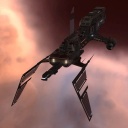 |
The Scimitar
|
Basilisk
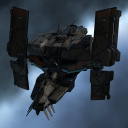 |
The Basilisk
|
Pirate faction battleships
The Machariel, Nightmare, and Vindicator are the preferred intermediate hullsfor incursions due to a combination of higher base stats, better bonuses and better slot layouts as compared to T1 battleships and the Praxis.
Some of these have a natural progression, like the Maelstrom pilot only needing Gallente Battleship to move into a Machariel and a Hyperion pilot only needing to train Minmatar Battleship to get into the Vindicator. Left a bit on the side is the Rokh with a low priority synergy with the Nightmare given the Caldari Battleship skill and a slightly stronger synergy with the Vindicator given that they both use the Large Hybrid Turret skill for their guns.
Training up a racial battleship skill from scratch to III takes less than four days and training a new racial turret skill to III is about a day and a half, so even if some of these ships have natural progression; don't feel like you're a slave to your initial choice of ship or weaponry.
Nightmare
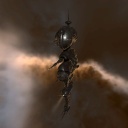 |
The Nightmare
|
Machariel
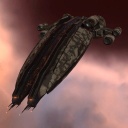 |
The Machariel
|
Vindicator
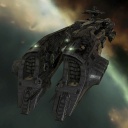 |
The Vindicator
|
- ^ a b c d Gallente Battleship and Minmatar Battleship are shared between both the Machariel and the Vindicator, so if you like flying multiple hulls you'd have the ship skills covered and you'd only need to train a new racial turret skill.
In almost all cases, upgrading your hull should be your first goal if you're looking to invest more ISK. Generally speaking for hisec, while faction and deadspace modules are great, pirate faction hulls often give superior bonuses without inflating the value of droppable modules fit to your ship. In the case of Incursions specifically, the matter comes down to the pirate faction battleships having two damage bonuses and powerful role bonuses (instead of having an offensive and a defensive bonus), plus much better overall ship stats such as align time.
Below is a list of some of the differences (relevant to incursions) for a Vindicator compared to a Hyperion, a Machariel compared to a Maelstrom, and a Nightmare compared to a Praxis.
| Improvements | Hyperion » Vindicator | Maelstrom » Machariel | Praxis » Nightmare |
|---|---|---|---|
| +22,2% more damage | +9,4% more damage | +33,3% more damage | |
| +37,5% more tracking | Similar | +37,5% more tracking | |
| Similar | +50% more falloff | Similar | |
| +14,3% capacitor recharge | +4,7% capacitor recharge | +17,8% capacitor recharge | |
| +16,7% more shield hp | +16,5% more shield hp | +62,3% more shield hp | |
| 17,5% smaller signature | 23,9% smaller signature | 20,4% smaller signature | |
| 20,8% longer lock range | Similar | 37,1% longer lock range | |
| -50 m3 drone bay | +25 m3 drone bay | -150 m3 drone bay | |
| -9,1% scan resolution | +38,9% scan resolution | -15,2% scan resolution | |
| Same | +1 AU/s warp speed | Same | |
| +29,7% more agile | +29,4% more agile | -18,0% less agile | |
| +14,7% faster | +71,3% faster | +52,0% faster |
- ^ Effective turrets is a measure of raw turrets modified by rate of fire or damage bonuses of the hulls as well as role bonuses.
- ^ Peak recharge is a measure of capacitor capacity / capacitor recharge time * 2,5 (peak coefficient). See capacitor recharge rate for more information.
- ^ A ship's velocity is unimportant in Vanguards, but valued in Assaults and Headquarters, which involve moving with microwarpdrives to anchor positions.
Marauders
Paladin
Vargur
Kronos
Fit Progression
For the most part, fit progression is really only relevant for high-end ships like the three pirate faction battleships mentioned above. Logistics ships use pretty much the same rigs, changing only a few modules based on their desired fit. Remember that upgrading from a regular battleship to a pirate faction battleship alone is a big upgrade and the best use of your ISK for the initial upgrade.
See upgrade priorities for more information and remember that your options are highly limited by your choice of rigs. That choice also heavily influences the amount of ISK you need to front to make the fit work. The examples below will use the more common setups, so will not include specialized fits such as the warp speed variant.
Cheap
If you're not entirely sure how you want to fit your ship in the end, the same principle that we follow to fit our minimum fits can be applied to pirate faction ships as well. Practically you can fit a Vindicator more or less the same way you'd fit a Hyperion. The same goes for fitting a Machariel similar to how you fit a Maelstrom.
Here's an example of a Nightmare fit according to our principles, with only a minor change to rigs since their increased stats make shield extender rigs superfluous.
Multispectrum Shield Hardener II
Multispectrum Shield Hardener II
EM Shield Hardener II
Damage Control II
Large Thermal Shield Reinforcer I
Large Energy Burst Aerator II
























- The Nightmare is often the only decent entry-ship for Amarr pilots.
- Even using the standard setup the ship sports plenty of midslots allowing for a high number of utility modules, four to be exact.
Effective
| “ | ... will free up an extra midslot. | ” |
If you want to keep the cost of the fit down while still having some improvements, you could go halfway with the cheapest deadspace modules. The advanced EM rig setup from the fitting principles page will free up an extra midslot.
| This fit changes the rig to a |
Pithum C-Type Multispectrum Shield Hardener
Multispectrum Shield Hardener II
Damage Control II
Large EM Shield Reinforcer I
Large Projectile Burst Aerator II


























- With a cheap setup you'd use up 3 midslots for tank, this only uses two, giving you one extra midslot for utility modules.
- Increasing the tank for this fit is a bit limited, but you can either add a normal Multispectrum Shield Hardener II module for assaults, or if you want to solidify your tank for headquarters, two Pithum B-Type Multispectrum Shield Hardeners.
Optimal
| “ | ... gives you maximum damage and will free up two extra midslots. | ” |
If you're willing to spend a little bit more on your favourite cash-cow ship, you can take it one step further with one of the more costly deadspace hardeners. The advanced electromagnetic rig setup from the fitting principles page gives you maximum damage and will free up an extra midslot.
Here's an example of a Vindicator fit according to that principle.
| This fit changes the rig to a |
Pithum B-Type Multispectrum Shield Hardener
Damage Control II
Large EM Shield Reinforcer I
Large Hybrid Burst Aerator II



























- With a cheap setup you'd use up 3 midslots for tank, leaving only 2 midslots for utility modules. But since you're only using 1 midslot you now have room for two additional midslots.
- Increasing the tank for this fit can be as cheap as adding a normal Multispectrum Shield Hardener II module for assaults, or if you want to solidify your tank for headquarters, a second Pithum B-Type or Pithum A-Type Multispectrum Shield Hardener.
Faction and deadspace modules
First of all, remember that getting a pirate faction hull is always going to give you better applied damage (and often many other advantages) compared to spending ISK on faction and deadspace modules. With the exception of the Federation Navy or Serpentis Stasis Webifier and tech two weapons, it is recommended that you get a better hull long before you look into upgrading modules.
Consider the actual benefit you will get from upgrading a certain module. Getting a deadspace hardener is useful for most ships as it frees up a midslot. But even though a faction tracking computer or a sensor booster might make sense for public fleets built to compete, for our community that isn't going to be as worthwhile of an investment as we usually don't compete.
What do you get in return?
To put this into perspective you need to factor in stacking penalties. If you're just using one module to a given effect, it's easy to calculate and see the difference, but when you have more intricate combinations where things end up 2nd, 3rd, 4th or 5th in the stacking hierarchy, it might be a little harder to see what you get out of it.
Module variants and price deviations

|
When you're shopping for faction or deadspace modules, check all equivalent variants for price deviations. For example, the Federation Navy Tracking Computer is identical in all but the name to the Shadow Serpentis Tracking Computer and their prices fluctuate over time, so use the Show Info and Compare-feature ingame to find potential alternatives and you might save millions. |
Injecting implants
There are plenty of hardwiring implants that are useful for incursion runners, with effects ranging from damage projection (tracking, damage or rate of fire) to fitting/support related effects (increased capacitor, powergrid or CPU) and warp speed. The bonuses from implants do not suffer stacking penalties, thus even the +3% variants are quite potent and cheap enough to use even while at war due to the low risk of actually losing your pod.
The best hardwiring implants (apart from officer implants) come from the CONCORD Loyalty Point store and give a +6% bonus but require Cybernetics V. Implants are available for all skills and wallets however, ranging from the 1%, 3% and 5% implants of normal LP stores to the CONCORD specific 2%, 4% and 6% implants.
As with all things, do your research and see if it's cheaper to simply buy it off of the market instead of getting it yourself from the LP store. See hardwiring implants for a full list of available implants.
See the Incursion Community Implant Guide for more information about recommended implants. This guide will cover the two types of implants that we suggest: Skill Hardwiring (slots 6-10) and Attribute Enhancing (slots 1-5). These implants are not required to fly in our community, but they do greatly improve ship performance. In order to use any of the implants listed in this guide, you will need to have the Cybernetics skill trained to at least level V. This will allow you to use 6% implants, which can be purchased with Concord Loyalty Points (LP) earned by running Incursions. These implants can be found at Concord Stations and cost 250 million ISK and 250,000 LP.
Skill progression
For the most part skill progression is as simple as just topping off the minimum skills you needed to get ready and perhaps train a couple of new skills to be able to use a different set of drones or a situational module. There are however some differences between skill progression for logistics and damage dealers.
Logistics
Progression for logistics is practically an intertwined mess of both fit and skill progression, as skills like Logistics Cruisers V and all the support skills all play a vital role. The more powerful tech two remote shield boosters require better fitting skills and utility modules require more cap, at the same time you want to use less fitting modules to free up room for even more utility modules while still keeping a good enough tank.
See minimum and recommended skills for a list of specific skills to train early on to quickly move into the recommended and advanced logistics fits.
| Implants
It's possible to change the priority or shorten the train early on by using implants to improve your capacitor regeneration or fitting room. This is because logistics have relatively small capacitor capacity and even small changes can often make or break a fit. See recommended implants for more information. |
Damage dealers
Most of the progression in terms of skill for damage dealers surrounds gunnery and drones, but also to some extent capacitor management and fitting skills. Skill progression for damage dealers are completely disjointed and separate from ship progression due to the fact that you'll perform better in a pirate faction than you would in a tech one hull no matter what your skills are. So as your skills improve you'll progress the same regardless if it's in a fancy ship or your old but trustworthy tech one battleship; You simply upgrade when your skills allow you to.
See minimum and recommended skills for a list of specific skills to train early on.
| Tech two weapons
As soon as you have the skills for it, toss away those old meta turrets and replace them with your tech two turrets of choice. All ships, tech one battleships as well as pirate faction battleships benefit greatly from the much more powerful tech two turrets (and their advanced ammunition). | |
| Improved drone skills
There are several drone-related skills to help improve your performance. First training into medium drones and improving drone control range, then general drone support and specialization skills. Later on you might train heavy drones for headquarter sites or sentry drones for vanguard sites. | |
| Capacitor management
Some skills improve basic capacitor regeneration, others reduce capacitor usage instead. Some ships will have little to no issues with cap, while others are much more subject to it and require very high skills. Implants play a small role in this as well, so your mileage will vary here depending on your skills, ship, fit and implants. | |
| Fitting skills
Long range weapons and propulsion modules in particular put a lot of strain on your power grid while tech two weapons and damage upgrades require a lot of CPU. This is not an issue early on, but as you move into assaults and headquarters, you might need to train skills that reduce the power grid and CPU requirements as well as improving the base output of your ship. |
Planning ahead
Unless you are already heavily invested into a certain race or weapon system, it might be a good idea to think of which logistics ship, strategic cruiser or pirate faction battleship you'll want in the end, rather than what your first incursion ship should be. Don't worry too much about it though, as the race specific ship and weapon skills you train for the minimum skills only amount to a little over five days worth of training. So changing your mind along the way wouldn't be much of a detour.
Depending on the race, training for strategic cruisers will make quite some progress towards being able to fly logistics as well, or the other way around if your goal is to fly logistics. That said, most strategic cruisers pale in comparison to the pirate faction battleships who remain the epitome of incursion boats.
You should also consider secondary value of whatever you train, perhaps you can find an end-of-the-line ship that not only furthers your goals for incursions but other goals as well given the skills you'll end up training for it. If you already know that you like smaller ships, or have plans for diving into a wormhole in the future, it would make much more sense training into a strategic cruiser than a pirate faction battleship.
So take some time to consider which racial ship line, what racial weapons would benefit you doing missions, exploration, PvP or whatever else you'd like to do in EVE.
